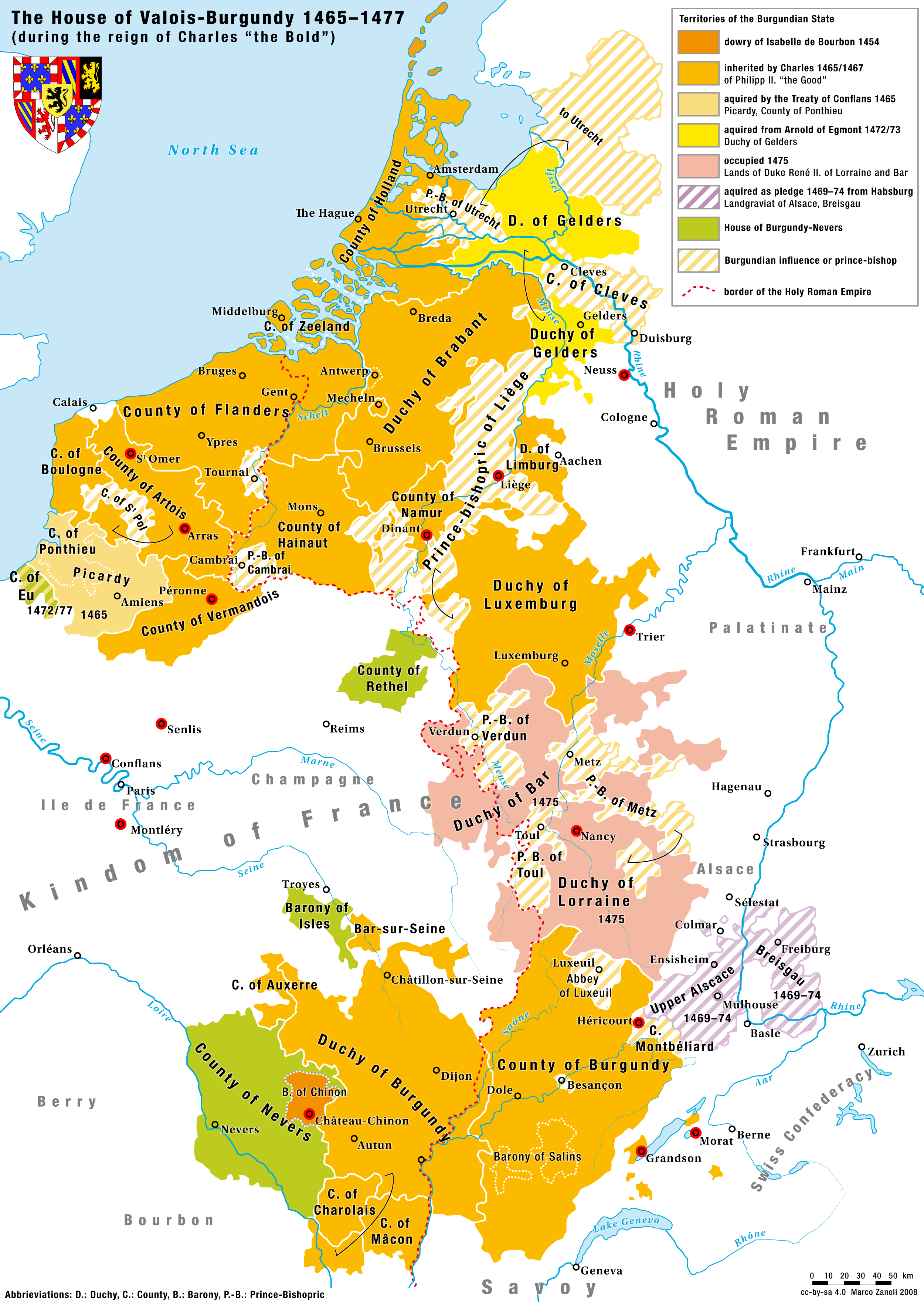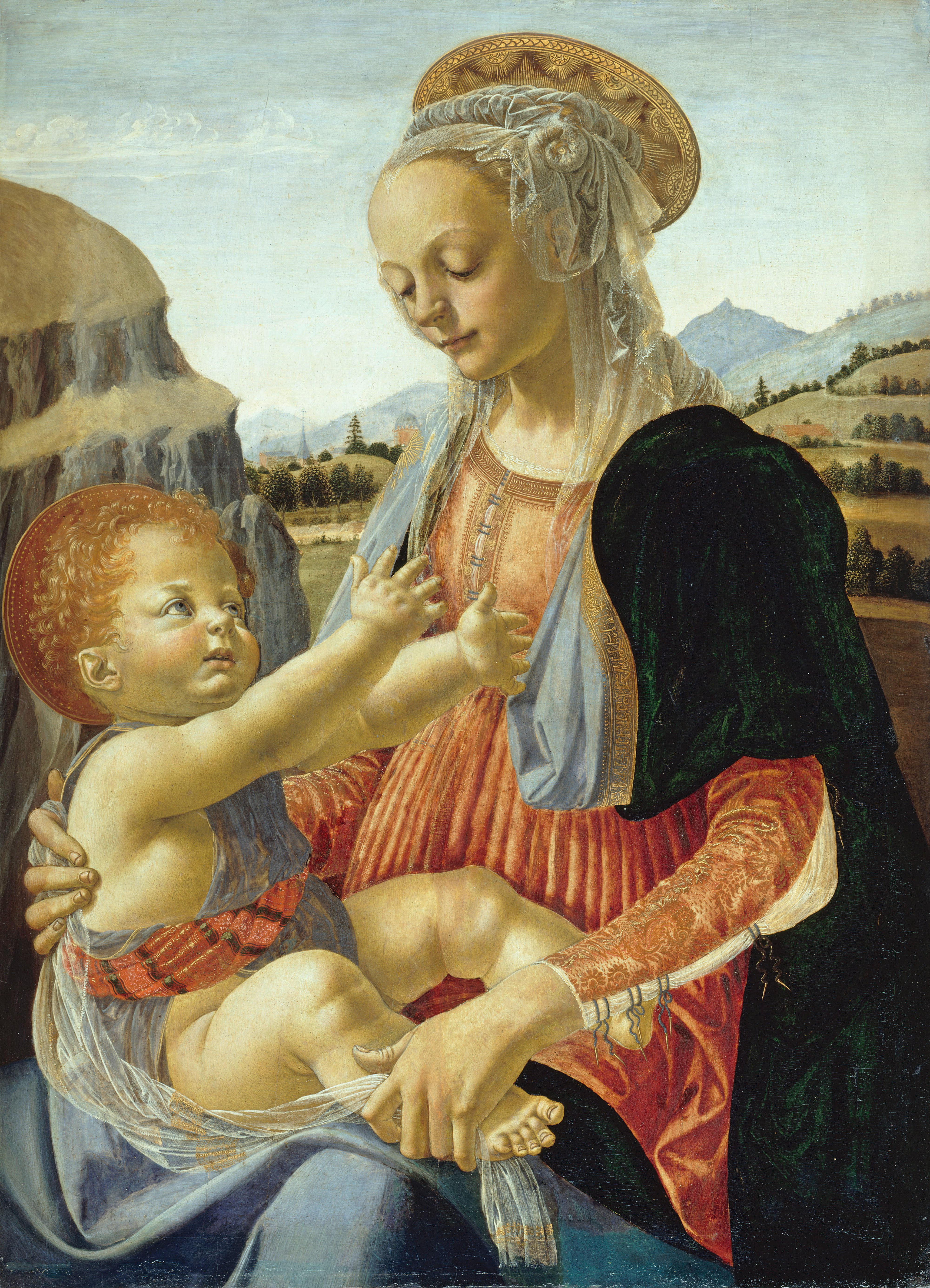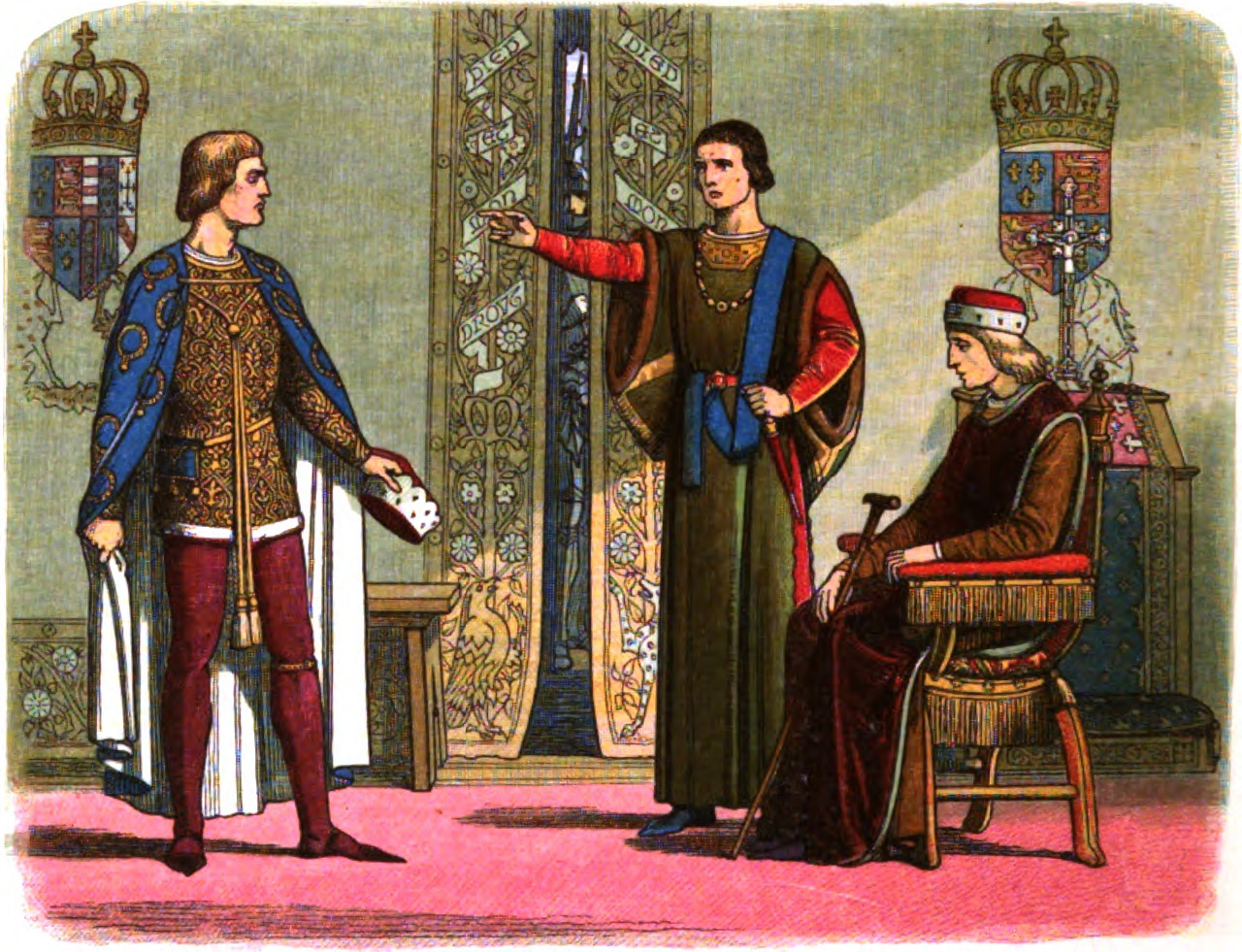|
1460s
The 1460s decade ran from January 1, 1460, to December 31, 1469. Significant people * Charles the Bold, Charles I (the Bold) (1433–1477), Duke of Burgundy, r. 1467–1477 * Jean Fouquet of France (1420–1481), painter * Francis II, Duke of Brittany, Francis II (1433–1488), Duke of Brittany, r. 1458–1488 * 1st Dalai Lama, Gendun Drup of Tibet (1391–1474), First Dalai Lama * Diogo Gomes of Portugal (1420–1485), navigator, explorer and writer * Johannes Gutenberg of Mainz (1395?–1468), printer and inventor of the movable type printing press * Henry the Navigator of Portugal (1394–1460), Portuguese prince and patron of exploration * William Herbert, 1st Earl of Pembroke (1423–1469), William Herbert of Wales (1423–1469), Pro-York nobleman * Sir Thomas Malory of England (1405?–1471), soldier, member of Parliament, political prisoner, and author of Le Morte d'Arthur * Richard Neville, 16th Earl of Warwick, Richard Neville of England (1428–1471), nobleman, administ ... [...More Info...] [...Related Items...] OR: [Wikipedia] [Google] [Baidu] |
Thomas Palaiologos
Thomas Palaiologos (; 1409 – 12 May 1465) was Despot of the Morea from 1428 until the fall of the despotate in 1460, although he continued to claim the title until his death five years later. He was the younger brother of Constantine XI Palaiologos, the final List of Byzantine emperors, Byzantine emperor. Thomas was appointed as Despot of the Morea by his oldest brother, Emperor John VIII Palaiologos, in 1428, joining his two brothers and other despots Theodore II Palaiologos, Theodore and Constantine, already governing the Morea. Though Theodore proved reluctant to cooperate with his brothers, Thomas and Constantine successfully worked to strengthen the despotate and expand its borders. In 1432, Thomas brought the remaining territories of the Latin Principality of Achaea, established during the Fourth Crusade more than two hundred years earlier, into Byzantine hands by marrying Catherine Zaccaria, heiress to the principality. In 1449, Thomas supported the ascension of his bro ... [...More Info...] [...Related Items...] OR: [Wikipedia] [Google] [Baidu] |
Richard III Of England
Richard III (2 October 1452 – 22 August 1485) was King of England from 26 June 1483 until his death in 1485. He was the last king of the Plantagenet dynasty and its cadet branch the House of York. His defeat and death at the Battle of Bosworth Field marked the end of the Middle Ages in England. Richard was created Duke of Gloucester in 1461 after the accession to the throne of his older brother Edward IV. This was during the period known as the Wars of the Roses, an era when two branches of the royal family contested the throne; Edward and Richard were Yorkists, and their side of the family faced off against their Lancastrian cousins. In 1472, Richard married Anne Neville, daughter of Richard Neville, 16th Earl of Warwick, and widow of Edward of Westminster, son of Henry VI. He governed northern England during Edward's reign, and played a role in the invasion of Scotland in 1482. When Edward IV died in April 1483, Richard was named Lord Protector of the realm for Ed ... [...More Info...] [...Related Items...] OR: [Wikipedia] [Google] [Baidu] |
Le Morte D'Arthur
' (originally written as '; Anglo-Norman French for "The Death of Arthur") is a 15th-century Middle English prose reworking by Sir Thomas Malory of tales about the legendary King Arthur, Guinevere, Lancelot, Merlin and the Knights of the Round Table, along with their respective folklore. In order to tell a "complete" story of Arthur from his conception to his death, Malory compiled, rearranged, interpreted and modified material from various French and English sources. Today, this is one of the best-known works of Arthurian literature. Many authors since the 19th-century revival of the legend have used Malory as their principal source. Apparently written in prison at the end of the medieval English era, ''Le Morte d'Arthur'' was completed by Malory around 1470 and was first published in a printed edition in 1485 by William Caxton. Until the discovery of the Winchester Manuscript in 1934, the 1485 edition was considered the earliest known text of ''Le Morte d'Arthur'' an ... [...More Info...] [...Related Items...] OR: [Wikipedia] [Google] [Baidu] |
Charles The Bold
Charles Martin (10 November 1433 – 5 January 1477), called the Bold, was the last duke of Burgundy from the House of Valois-Burgundy, ruling from 1467 to 1477. He was the only surviving legitimate son of Philip the Good and his third wife, Isabella of Portugal. As heir and as ruler, Charles vied for power and influence with rivals such as his overlord, King Louis XI of France. In 1465 Charles led a successful revolt of Louis's vassals in the War of the Public Weal. After becoming the Duke of Burgundy in 1467, Charles pursued his ambitions for a kingdom, independent from France, that would stretch contiguously from the North Sea in the north to the borders of Savoy in the south. For this purpose, he acquired Guelders and Upper Alsace; sought the title King of the Romans; and gradually became an enemy of the Germans. Charles married Margaret of York for an English alliance. He arranged the betrothal between his sole child, Mary, with Maximilian of Austria. A passiona ... [...More Info...] [...Related Items...] OR: [Wikipedia] [Google] [Baidu] |
Andrea Del Verrocchio
Andrea del Verrocchio ( , , ; born Andrea di Michele di Francesco de' Cioni; – 1488) was an Italian sculpture, sculptor, List of Italian painters, painter and goldsmith who was a master of an important workshop in Florence. He apparently became known as ''Verrocchio'' after the surname of his master, a goldsmith. Few paintings are attributed to him with certainty, but important painters were trained at his workshop. His pupils included Leonardo da Vinci, Pietro Perugino and Lorenzo di Credi. His greatest importance was as a sculptor and his last work, the Equestrian statue of Bartolomeo Colleoni in Venice, is generally accepted as his masterpiece. Life Verrocchio was born in Florence in around 1435. His father, Michele di Francesco Cioni, initially worked as a tile and brick maker, then later as a tax collector. Verrocchio never married, and had to provide financial support for some members of his family. He was at first apprenticed to a goldsmith. It has been suggested that ... [...More Info...] [...Related Items...] OR: [Wikipedia] [Google] [Baidu] |
Richard Plantagenet, 3rd Duke Of York
Richard of York, 3rd Duke of York (21 September 1411 – 30 December 1460), also named Richard Plantagenet, was a leading English magnate and claimant to the throne during the Wars of the Roses. He was a member of the ruling House of Plantagenet by virtue of being a direct male-line descendant of Edmund of Langley, King Edward III's fourth surviving son. However, it was through his mother, Anne Mortimer, a descendant of Edward III's second surviving son, Lionel of Antwerp, that Richard inherited his strongest claim to the throne, as the opposing House of Lancaster was descended from John of Gaunt, Duke of Lancaster, the third surviving son of Edward III. He also inherited vast estates and served in various offices of state in Ireland, France and England, a country he ultimately governed as Lord Protector due to the mental instability of King Henry VI. Richard's conflicts with Henry's wife, Margaret of Anjou, and other members of Henry's court, such as Edmund Beaufort ... [...More Info...] [...Related Items...] OR: [Wikipedia] [Google] [Baidu] |
Owen Tudor
Sir Owen Tudor (, – 2 February 1461) was a Welsh courtier and the second husband of Queen Catherine of Valois (1401–1437), widow of King Henry V of England. He was the grandfather of Henry VII, founder of the Tudor dynasty. Background Owen was a descendant of a prominent family from Penmynydd on the Isle of Anglesey, which traces its lineage back to Ednyfed Fychan (d. 1246), a Welsh official and seneschal to the Kingdom of Gwynedd. Tudor's grandfather, Tudur ap Goronwy, married Margaret, daughter of Thomas ap Llywelyn ab Owain of Cardiganshire, the last male of the senior branch of the princely house of Deheubarth. Margaret's elder sister married Gruffudd Fychan of Glyndyfrdwy, whose son was Owain Glyndŵr. Owen's father, Maredudd ap Tudur, and his uncles were prominent in Owain Glyndŵr's revolt against English rule, the Glyndŵr Rising. Historians consider the descendants of Ednyfed Fychan, including Owen Tudor, one of the most powerful families in 13th to 14th-ce ... [...More Info...] [...Related Items...] OR: [Wikipedia] [Google] [Baidu] |
Jasper Tudor
Jasper Tudor, Duke of Bedford (c. November 143121 December 1495) was the uncle of King Henry VII of England and a leading architect of his nephew's successful accession to the throne in 1485. He was a member of the Tudor family of Penmynydd. Jasper Tudor's coat of arms, granted to him by his maternal half-brother, King Henry VI, quarters the three lilies of France with the three lions of England, with the addition of a ''bordure azure with martlets or'' (that is, a blue border featuring golden martlets). Family and early life Jasper was the second son of Sir Owen Tudor and the former queen Catherine of Valois, the widow of King Henry V of England. He was thus half-brother to Henry VI. Through his father, Jasper was a descendant of Ednyfed Fychan, Llywelyn the Great's renowned chancellor. His mother was a daughter of King Charles VI of France. Jasper was born at the bishop of Ely's manor at Hatfield, Hertfordshire, in 1431, his parents' second child. After the death of Ja ... [...More Info...] [...Related Items...] OR: [Wikipedia] [Google] [Baidu] |
Aztec Empire
The Aztec Empire, also known as the Triple Alliance (, Help:IPA/Nahuatl, [ˈjéːʃkaːn̥ t͡ɬaʔtoːˈlóːjaːn̥]) or the Tenochca Empire, was an alliance of three Nahuas, Nahua altepetl, city-states: , , and . These three city-states ruled that area in and around the Valley of Mexico from 1428 until the combined forces of the Spanish and their native allies who ruled under Spanish conquest of the Aztec Empire, defeated them in 1521. Its people and civil society are historiographically referred to as the ''Aztecs'' or the ''Culhua-Mexica''. The alliance was formed from the victorious factions of a civil war fought between the city of and its former tributary provinces. Despite the initial conception of the empire as an alliance of three self-governed city-states, the capital became dominant militarily. By the time the Spanish arrived in 1519, the lands of the alliance were effectively ruled from , while other partners of the alliance had taken subsidiary roles. The al ... [...More Info...] [...Related Items...] OR: [Wikipedia] [Google] [Baidu] |
Tlacochcalcatl
Tlacochcalcatl ( "The man from the house of darts") was an Aztec military title or rank; roughly equivalent to the modern title of field marshal. In Aztec warfare the ''tlacochcalcatl'' was second in command only to the ''tlatoani'' and he usually led the Aztec army into battle when the ruler was otherwise occupied. Together with the '' tlacateccatl'' (general), he was in charge of the Aztec army and undertook all military decisions and planning once the ''tlatoani'' had decided to undertake a campaign. The ''tlacochcalcatl'' was also in charge of the ''tlacochcalco. Tlacochcalco'' ("in the house of darts") was the name of four armories placed at the four entries to the ceremonial precinct of the Aztec capital Tenochtitlan. These mains armories were stocked with new weapons every year (during the festival of Quecholli), and one account by the Spanish ''conquistador'' Andrés de Tapia estimates the number of weapons found in each of the four armories to be "500 cartloads". Th ... [...More Info...] [...Related Items...] OR: [Wikipedia] [Google] [Baidu] |
Tlacaelel
Tlacaelel I (1397 – 1487) ( , "Man of Strong Emotions," from "tlācatl," person and "ēllelli," strong emotion) was the principal architect of the Aztec Triple Alliance and hence the Mexica (Aztec) empire. He was the son of Emperor Huitzilihuitl and Queen Cacamacihuatl, nephew of Emperor Itzcoatl, father of poet Macuilxochitzin, and brother of Emperors Chimalpopoca and Moctezuma I. During the reign of his uncle Itzcoatl, Tlacaelel was given the office of Tlacochcalcatl, but during the war against the Tepanecs in the late 1420s, he was promoted to first adviser to the ruler, a position called '' Cihuacoatl'' in Nahuatl, an office that Tlacaelel held during the reigns of four consecutive ''Tlatoque'', until his death in 1487. Tlacaelel recast or strengthened the concept of the Aztecs as a chosen people, elevated the tribal god/hero Huitzilopochtli to top of the pantheon of gods, and increased militarism. In tandem with this, Tlacaelel is said to have increased the level ... [...More Info...] [...Related Items...] OR: [Wikipedia] [Google] [Baidu] |
Mosul
Mosul ( ; , , ; ; ; ) is a major city in northern Iraq, serving as the capital of Nineveh Governorate. It is the second largest city in Iraq overall after the capital Baghdad. Situated on the banks of Tigris, the city encloses the ruins of the ancient Old Assyrian Empire, Assyrian city of Nineveh—once the List of largest cities throughout history, largest city in the world—on its east side. Due to its strategic and central location, the city has traditionally served as one of the hubs of international commerce and travel in the region. It is considered as one of the historically and culturally significant cities of the Arab world. The North Mesopotamian dialect of Arabic commonly known as North Mesopotamian Arabic, ''Moslawi'' is named after Mosul, and is widely spoken in the region. Together, with the Nineveh Plains, Mosul is a historical center of the Assyrian people, Assyrians. The surrounding region is ethnically and religiously diverse; a large majority of the city is A ... [...More Info...] [...Related Items...] OR: [Wikipedia] [Google] [Baidu] |






